Insects such as bees, beetles, as well as caterpillars, slugs and snails will eat tomato plants at night. Larger animals such as skunks, racoons, dear and possums will chew on tomato leaves and the fruit throughout the night and early morning. Controlling insects is the best way to protect your plants as well as creating a barrier to stop larger animals.
The most common predators of tomato plants at night are snails and slugs, particularly when the weather is wet. You will see holes in the leaves or chew marks on the leaf edges. Snails and slugs come out at night and hide in the mulch or organic matter during the day.
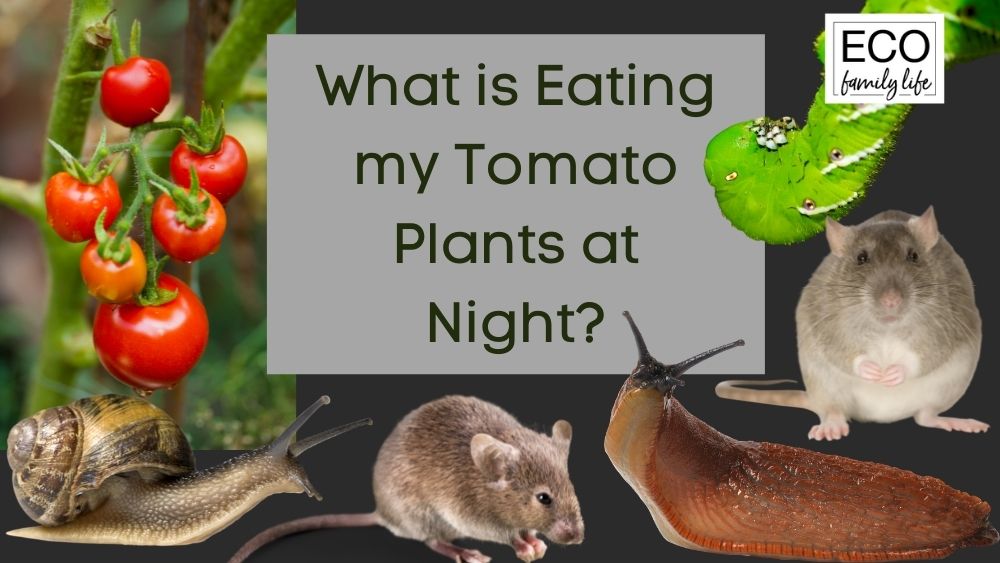
This article will explore what could be eating your tomato leaves at night and what you can do to protect your plants.
What is eating tomato plants at night
Here are the top creatures that will be eating your tomato plants at night. They can eat just the fruit or move on to chew on the leaves, stems or destroy your whole plant.
1. Snails
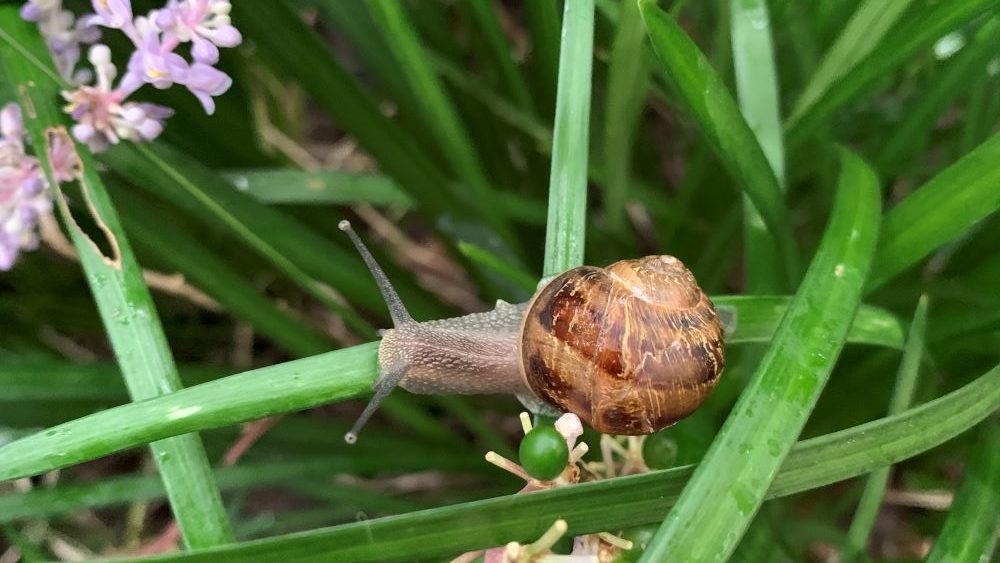
Snails are one of the most common predators that will eat your tomato plant leaves. They usually hide in the leaf matter on the ground or in the mulch and come out when it gets dark. They will crawl up the plant and head towards the softer leaves and will start chewing.
They can eat the leaves from the outside in or can eat holes in the leaves from the center. When it starts to get light in the morning, they will return to the mulch and hide. If you get up very early or head out at night with a torch, you can sometimes catch them crawling up.
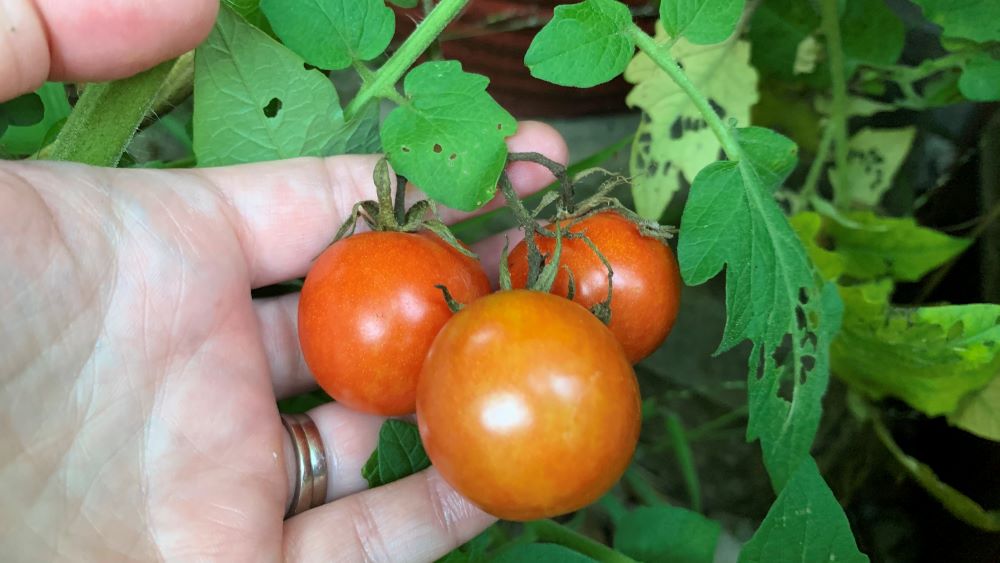
How to control snails
To stop snails from eating your tomato plants, set a beer trap which is just a saucer under the plant filled with beer. The snails will be attracted to the beer and crawl in and die.
You can also scatter small amounts of coffee grounds or crushed egg shells around the base of the tomato plant. Snails hate crawling through both of these and will avoid the area.
2. Slugs
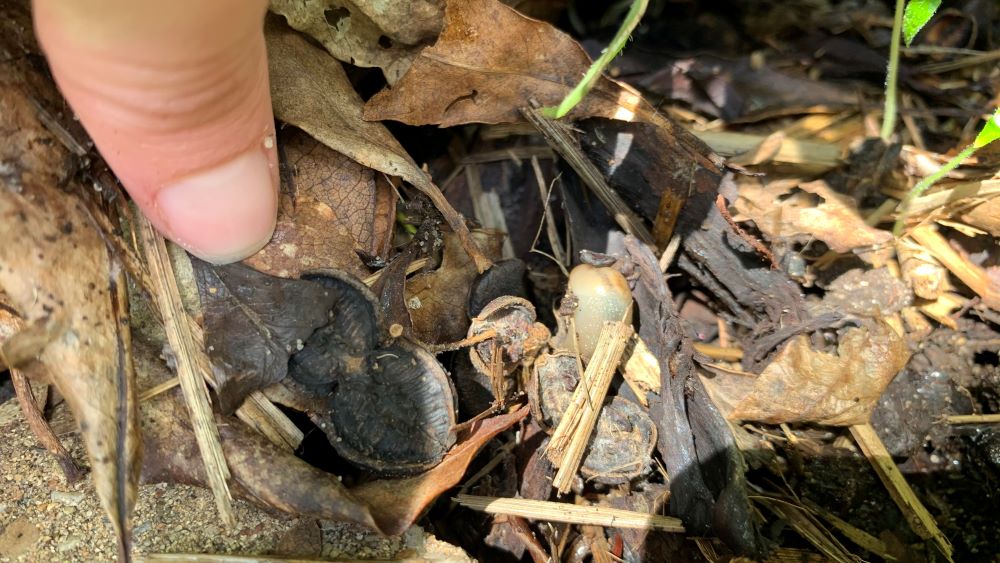
Slugs are a common pest that will chew on tomato leaves. They will also crawl onto and eat very ripe tomatoes as they start to get soft. They come out at night and hide away from predators during the daylight hours.
Sometimes you can catch them on the underside of the tomato leaves early in the morning or on the fruit as they continue to devour them.
How to control slugs
Control slugs using a beer trap and sprinkling crushed egg shells or coffee grounds around the plant. Interplanting tomatoes with flowers can distract and deter slugs from crawling from plant to plant and can encourage birds that will pray on the slugs.
The more diverse your planting is, the less likely it will be that any one creature including slugs will take over.
3. Skunks, racoons, deer, possums and birds
These larger animals will usually seek out tomato fruit before they go for the leaves. They can devour lots of fruit over night or tear out your whole tomato plant.
Protecting your tomato plants with a barrier is the best way to stop larger creatures from getting to your tomato plants.
Birds will visit the tomato plants in the early morning, often visiting to chew on the fruit but can quickly destroy the plants too. Cockatoos are common in Australia and can rip apart tomato plants with their large beaks.
Fences are the first step to keeping larger animals out while smaller covers can help to protect raised garden beds and pots. You can put wooden stakes in the corners of your garden bed and drape bird netting over the top. Make sure the holes are large enough that birds will not get caught and stuck.
4. Rats and mice
Rats and mice are common pests that can eat both your tomato plant leaves and fruit. They can bury themselves and hide in your garden soil or venture out at night to find tomatoes to feed on. Look out for holes in the soil nearby and chew marks in the fruit and leaves.
Rats and mice will also leave dropping on the soil, with rats leaving larger droppings than mice. Traps can be used to catch these creatures but avoid using baits. The animal can ingest the baits and then be eaten by larger predatory birds which can be poisoned by the baits.
For more on how to keep mice off of tomato plants, check out my article here: How to keep mice off tomato plants | Top 7 extraordinary solutions
6. Tomato horn worms
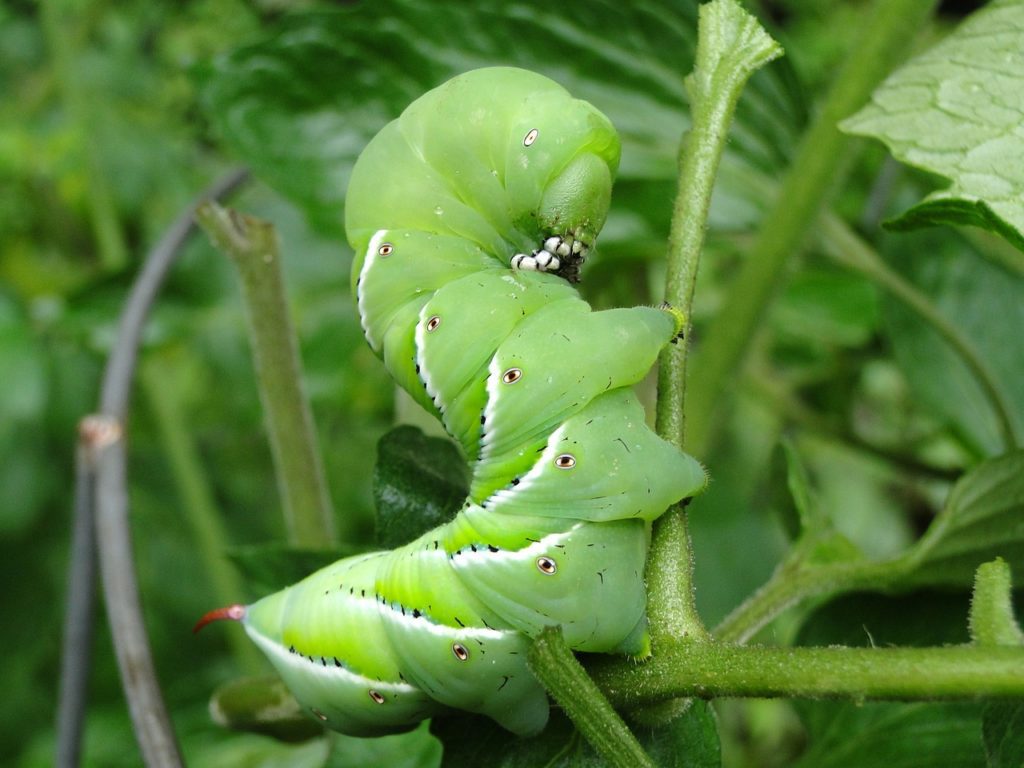
Tomato hornworms are found nearly everywhere in North America and they eat the the fruits, leaves, and even the stems of tomato plants.
The tomato hornworm is about four inches long but are green and camouflage well on your tomato plant leaves. They look like a large caterpillar and is named because it has a large horn, usually in either red or black, protruding from its rear. Tomato hornworms are actually baby heavy-bodied moths, which grow up to have a wingspan about five inches in length.
How to get rid of hornworms
One of the easiest ways to get rid of tomato hornworms is to pick them off wearing garden gloves. Knock them into a bucket of soapy water with a small spade if you don’t want to touch them. Repeat this every day for a week until all of the caterpillars are gone.
You can also sprinkle diatomaceous earth around your tomato plants which will kill the hornworms when they crawl over it. Diatomaceous earth is nontoxic and made up of tiny aquatic organisms that are fossilized.
What is Eating my Tomato Plants at Night? | Summary
Tomato plants can be attacked at night by birds, insects, mice and larger animals such as deer and possums. Protecting the plant with wildlife safe netting is the best way to keep larger creatures away. Setting beer traps will captures slugs and snails and diatomaceous earth will get rid of hornworms.
Check the underside of your tomato leaves to see if you can catch the culprit in the act so you know what you are dealing with.
Happy growing.
I am an accredited practicing dietitian, experienced gardener and a dedicated cook. I love writing and sharing my experience so you can learn from my successes and mistakes.
